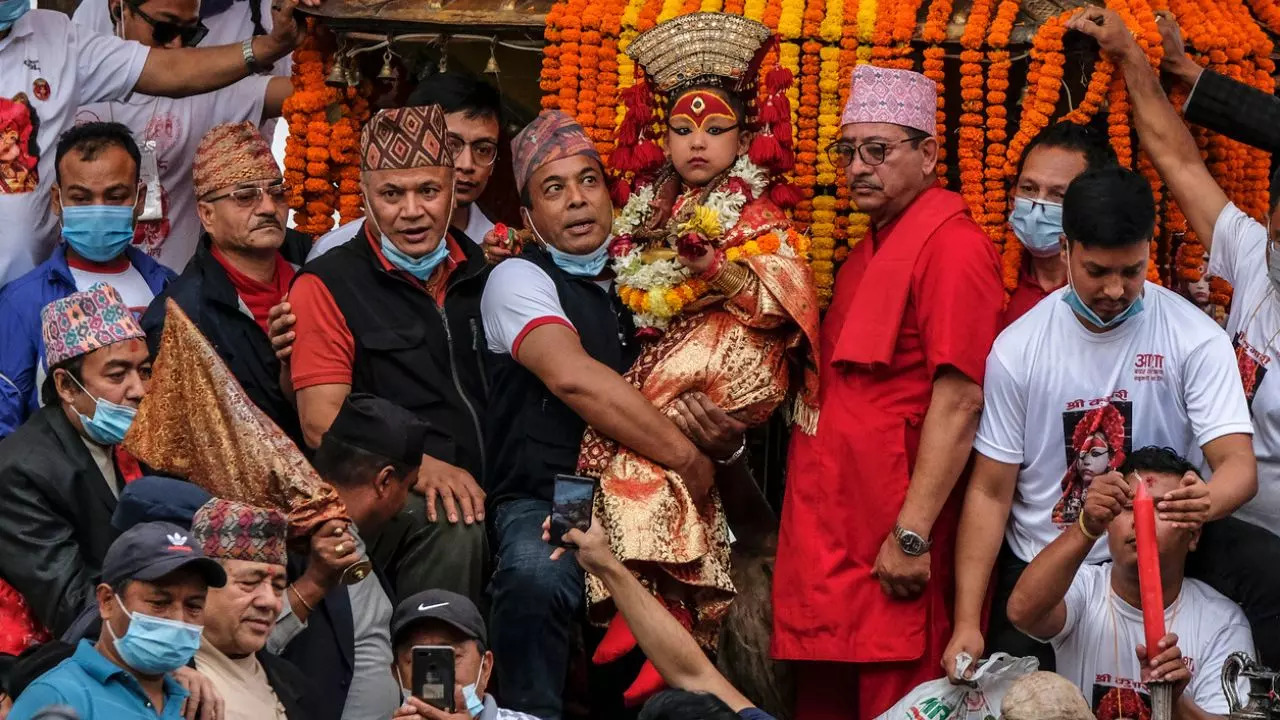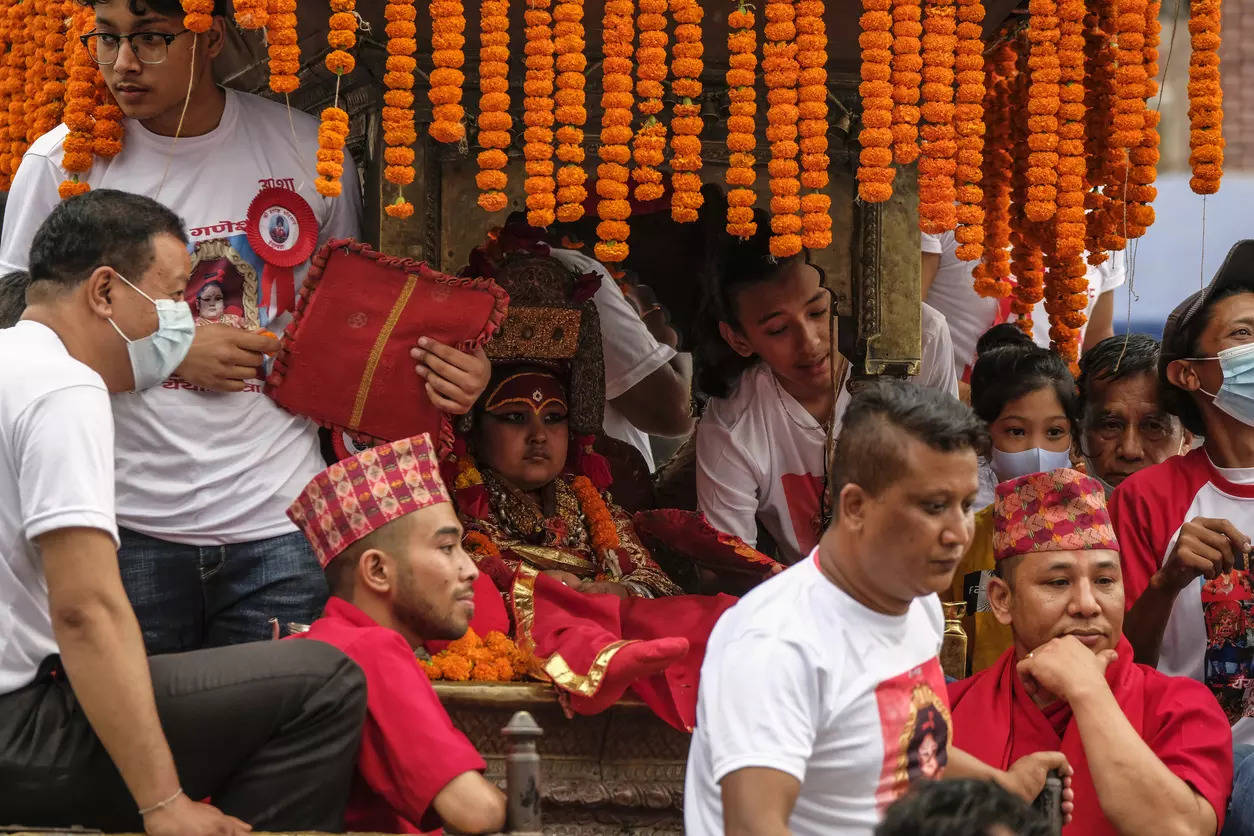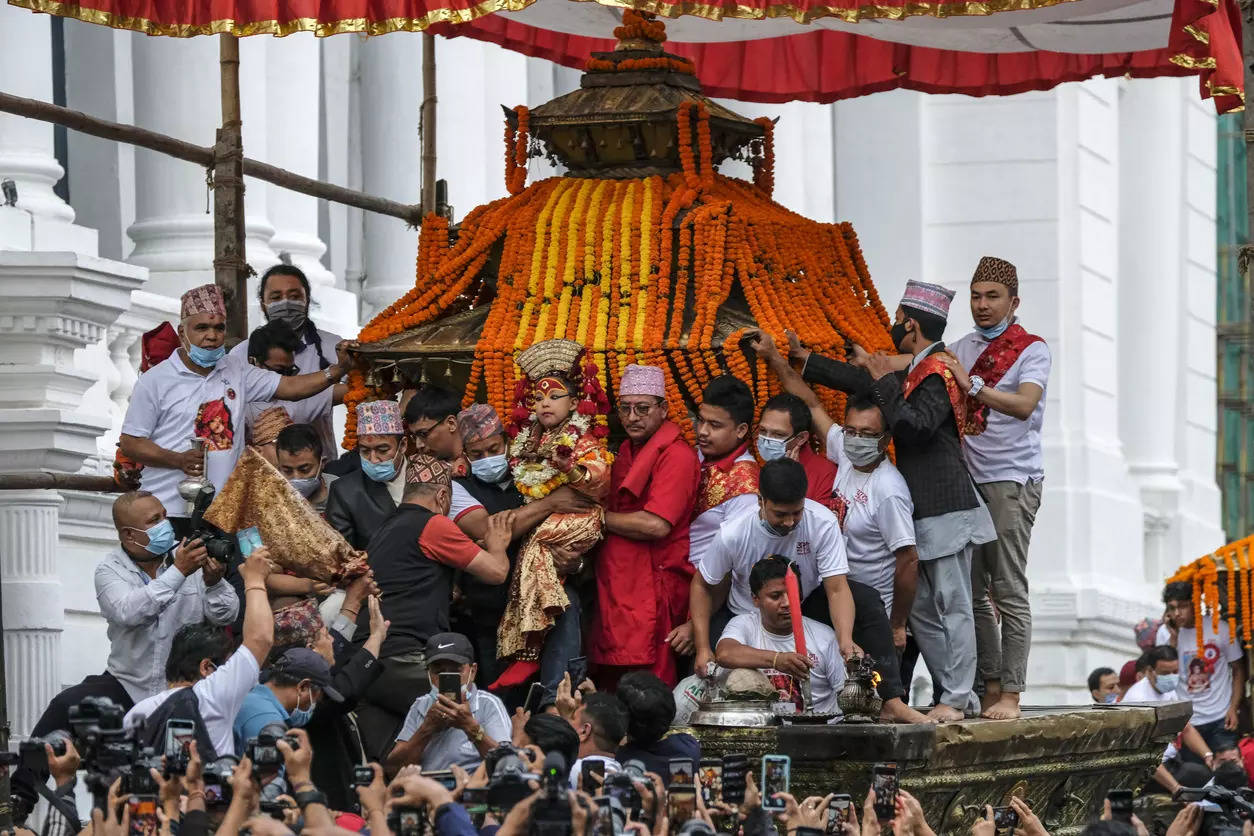
Indra Jatra: This festival in Nepal pays homage to a young and lively goddess. Credit: iStock
On September 18, tens of thousands of devotees gathered in Kathmandu to celebrate the beginning of NepalThe festival season lasts for several months and begins with the Indra Jatra procession. While the celebration honors the Hindu god Indra (the king of gods and the god of rain, thunder, and the sky), at the heart of this procession is the living goddess Kumari (Kumari Jatra), worshipped by both Hindus and Buddhists in this country, her chariot is paraded through the city in a show of reverence and joy.

Who is Kumari?
A Kumari is a prepubescent girl selected from the Shakya clan of the Nepalese Newari Buddhist community. She is revered by both Hindus and Buddhists as a living goddess, and is believed to be the incarnation of the goddess Taleju. The most famous Kumari of Nepal is the Royal Kumari of Kathmandu.
The Kumari tradition dates back to the 9th century. According to legend, the king of the Malla dynasty sought the protection of the goddess Taleju to help unify Nepal. However, the goddess was not pleased and swore never to meet the king again. The king begged for forgiveness and the goddess asked him to find a “pure” girl from the Shakya family, the highest caste of the Newari people. The goddess would manifest herself in this young girl, serving as a living symbol of her divine presence. And this is where the Kumari tradition finds its origin.

Today, the Kumaris of Nepal have been worshipped for about a decade, the most important being the royal Kumari of Kathmandu. According to local beliefs, when a Kumari reaches puberty or suffers a serious illness or injury, the deity is believed to leave her body. Once Taleju leaves the girl’s body, her successor is chosen from the same clan. According to traditions, there are 32 qualities of perfection on which each candidate, often infants, is judged by the country’s top priests.
Once selected, the Kumari is taken to the Kumari Ghar, a palace in central Kathmandu, where she resides during her tenure. She is treated with great reverence and respect, and her every move is closely watched by priests and attendants.
The role of the Kumari is not merely symbolic. She is believed to have the power to bless or curse people, and her presence is considered auspicious for the nation. Many people seek her blessings for good health, prosperity and protection. During the Kumari Jatra, thousands of devotees flock to Kathmandu’s UNESCO World Heritage Site Durbar Square every year to catch a glimpse of this young goddess.
Disclaimer:
The information contained in this post is for general information purposes only. We make no representations or warranties of any kind, express or implied, about the completeness, accuracy, reliability, suitability or availability with respect to the website or the information, products, services, or related graphics contained on the post for any purpose.
We respect the intellectual property rights of content creators. If you are the owner of any material featured on our website and have concerns about its use, please contact us. We are committed to addressing any copyright issues promptly and will remove any material within 2 days of receiving a request from the rightful owner.
